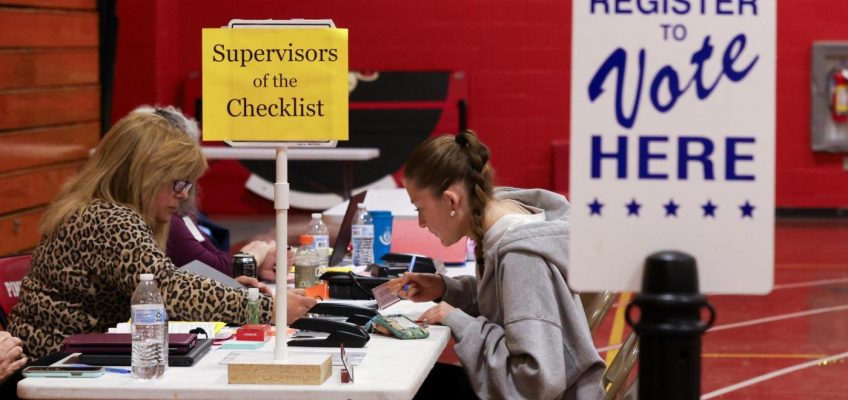By ALI SWENSON
NEW YORK (AP) — A federal judge on Thursday will hear arguments in three cases from national Democrats and voting rights groups that are challenging President Donald Trump’s recent executive order on elections, which, among other changes, would require proof of citizenship to register to vote in federal elections.
Related Articles
How war, money and the quest for discovery entwined the US government and universities
Draft budget plan proposes deep cuts across federal health programs
Why Elon Musk installed his top lieutenants at a federal agency you probably haven’t heard of
Trump administration takes aim at Harvard’s international students and tax-exempt status
Judge says labor unions’ lawsuit over DOGE access to Labor Department systems can move forward
The Democratic National Committee, the League of United Latin American Citizens, the League of Women Voters Education Fund and others are seeking to block Trump’s sweeping overhaul of federal election processes, alleging that the changes he wants are unconstitutional.
The Republican president’s executive order says the U.S. has failed “to enforce basic and necessary election protections” and calls on states to work with federal agencies to share voter lists and prosecute election crimes. It threatens to pull federal funding from states where election officials don’t comply.
It also aims to mandate major changes to election processes, including adding a proof-of-citizenship requirement to the federal voter registration form and requiring all mail ballots to be received, rather than just postmarked, by Election Day nationwide.
The plaintiffs argue Trump’s order is illegal because it asserts power that he does not have over an independent agency. That agency, the U.S. Election Assistance Commission, sets voluntary voting system guidelines and maintains the federal voter registration form.
The plaintiffs also argue the order violates the Constitution, which says that states — not the president — get to decide the “times, places and manner” of how elections are run. The Constitution’s so-called Elections Clause also gives Congress the power to “make or alter” election regulations, at least for federal office, but it doesn’t mention any presidential authority over election administration.
U.S. District Judge Colleen Kollar-Kotelly in Washington, D.C., will consider the plaintiffs’ pleas for a preliminary injunction, temporarily blocking the order as the lawsuits play out. She instructed the parties to be prepared to discuss a range of topics, including whether the Election Assistance Commission can comply with Trump’s demands while following the law and whether the plaintiffs have standing to raise each of their claims.
A sign for new voter registration is seen outside a polling location at Pinkerton Academy in Derry, N.H., Tuesday, March 11, 2025. (AP Photo/Reba Saldanha)
Justin Levitt, a former Justice Department attorney and a White House adviser during President Joe Biden’s administration, said the Constitution is clear that the president has very little authority to regulate federal elections. But he said he expects the hearing will include debate over whether these groups have standing to sue and whether it is the appropriate time to bring a lawsuit.
“This is a pretty easy case when it comes to the legal merits, but whether they get to the legal merits is not trivial,” he said.
The hearing comes as other lawsuits against Trump’s executive order are pending.
Earlier this month, 19 Democratic attorneys general asked the court to reject Trump’s executive order. The following day, Washington and Oregon, two states that hold all-mail elections, followed up with their own lawsuit against the order.
Associated Press writer Christina A. Cassidy in Atlanta contributed to this report.
The Associated Press receives support from several private foundations to enhance its explanatory coverage of elections and democracy. See more about the AP’s democracy initiative here. The AP is solely responsible for all content.




